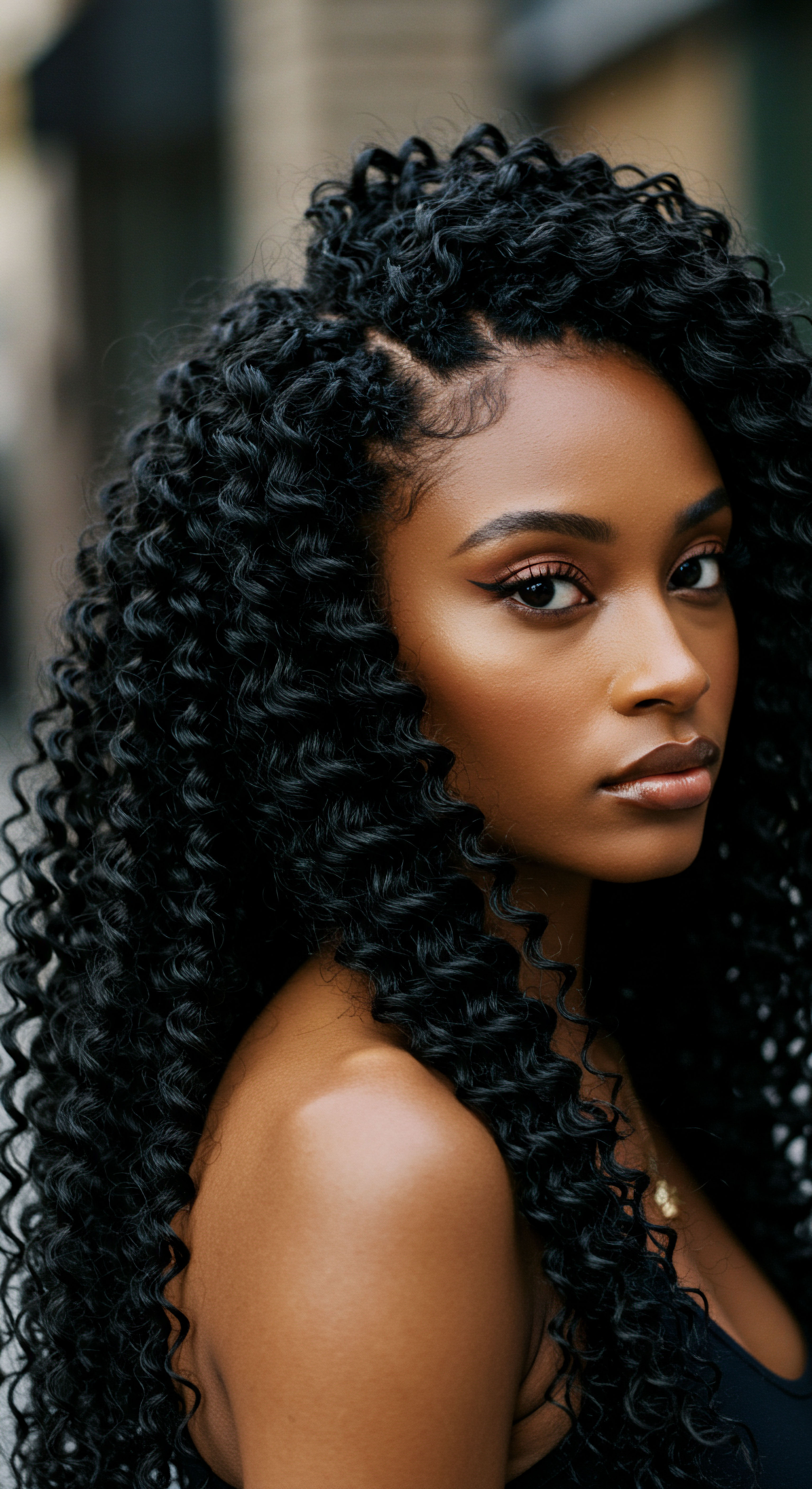
Roots
The quiet fall of evening across African landscapes, centuries past, brought with it a different kind of quietude for hair. It was not merely about preparing for rest; it was a deeply ingrained practice, a continuation of care that spoke volumes about reverence for self and heritage. For generations, before the dawn of modern conditioners or silk pillowcases, African communities understood hair as far more than an aesthetic adornment.
It served as a profound communicator of identity, social standing, age, and spiritual connection. This understanding shaped daily life, including the quiet rituals observed as the sun dipped below the horizon, protecting these precious crowns from the vulnerabilities of the night.
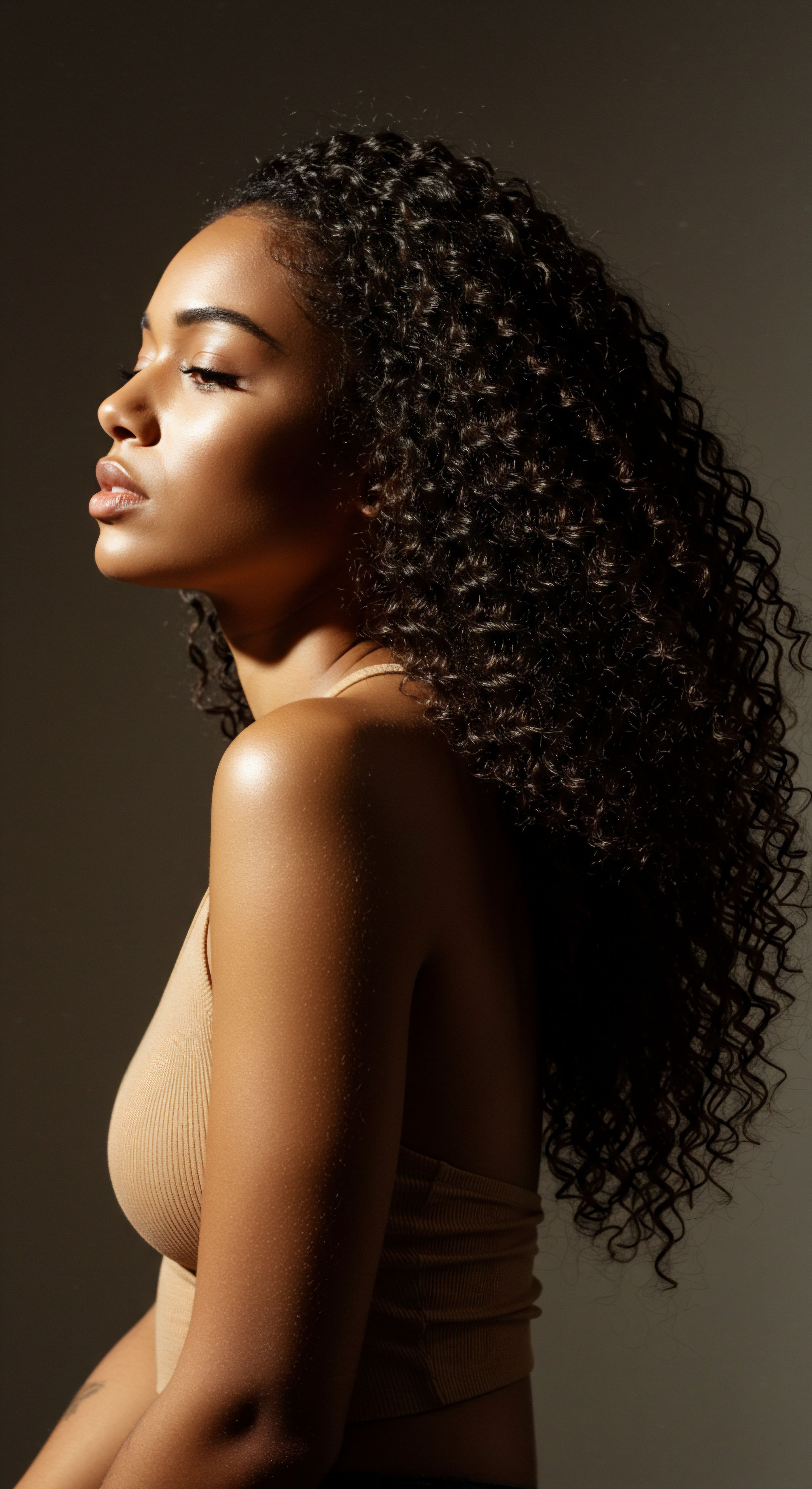
What Did Hair Mean to Ancestors?
In pre-colonial African societies, hair held immense cultural and spiritual weight. It was a visual language, a living chronicle of one’s lineage, social position, marital status, and even spiritual beliefs. The intricate styles seen across various ethnic groups — from the Wolof to the Yoruba, the Mende to the Ashanti — were not simply decorative; they were rich in symbolism, telling stories without a single word. A person’s hairstyle could signify their tribe, their age, whether they were married or single, or their standing within the community.
For instance, some cultures saw elaborate braids on young women as markers of initiation ceremonies, signifying their passage into adulthood. The head, being the highest point of the body, was often considered the closest to the divine, a channel for spiritual energy. Therefore, the care and styling of hair were not superficial acts but sacred responsibilities, acts of respect for one’s connection to ancestors and the spiritual realm.
Ancestral African hair care was a quiet continuation of deep reverence for self and heritage, where hair served as a living chronicle of identity and spiritual connection.
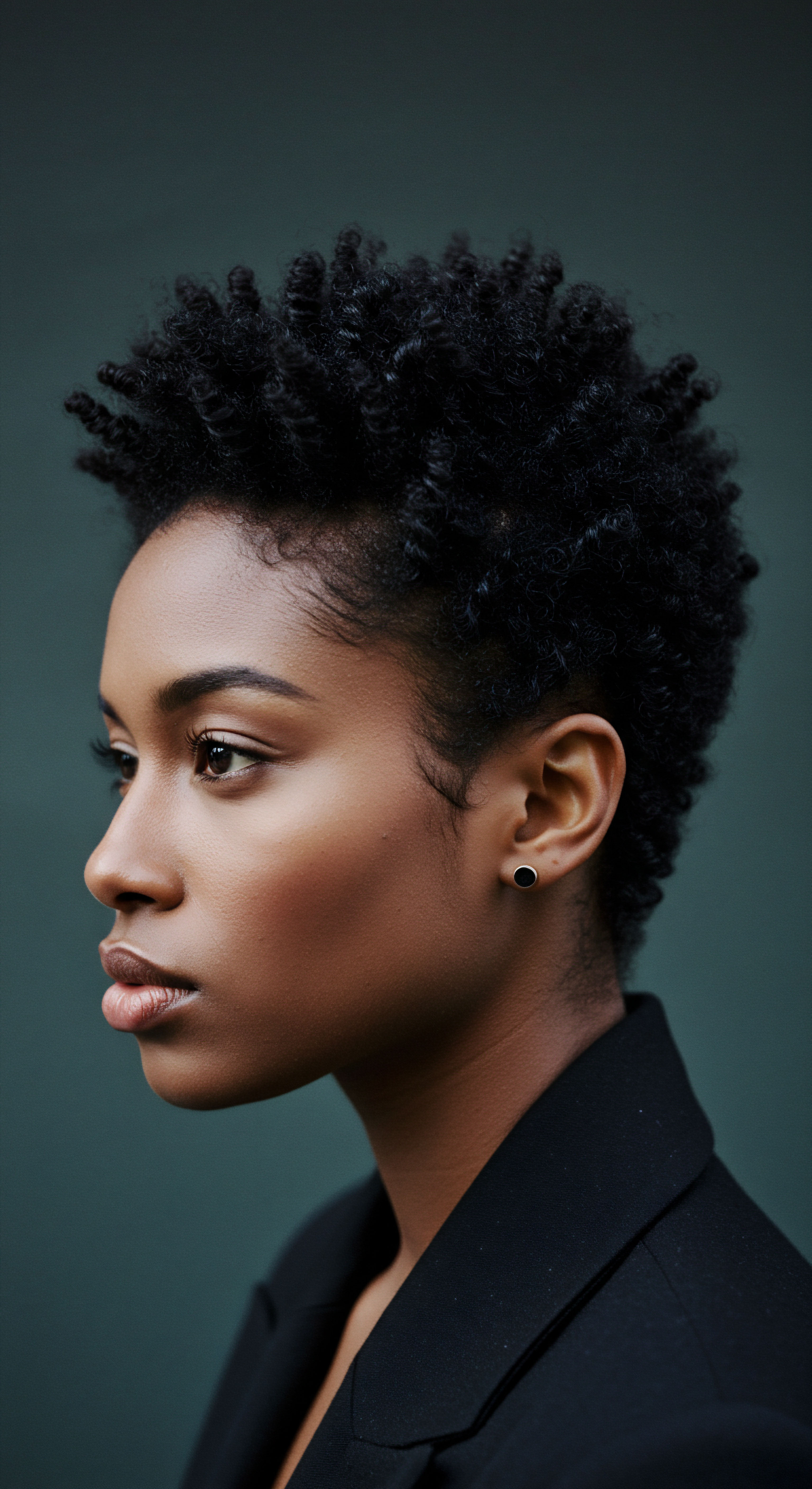
The Delicate Architecture of Textured Hair at Rest
Textured hair, with its unique coil and curl patterns, possesses a distinct beauty, yet also presents specific needs for preservation, especially during sleep. The natural bends and turns of curly and coily strands, while contributing to their volume and versatility, also create points where friction can cause damage. Unlike straight hair, which allows natural oils to travel down the shaft with ease, the journey of sebum along a coily strand is more circuitous, often leaving the ends feeling drier.
This inherent characteristic means that without proper nighttime care, hair can become tangled, lose moisture, and experience breakage as one shifts during sleep. The wisdom of ancestral methods recognized this vulnerability, developing practices that countered these challenges, ensuring strands remained supple and strong.

Environmental Adversaries of Nighttime Strands
The environment, even indoors, posed silent threats to hair health. Cotton, a common bedding material, is a highly absorbent fiber. As a person slept on a cotton pillowcase, the fabric could draw moisture directly from the hair, leaving it parched and brittle by morning. This desiccation made strands more susceptible to mechanical damage.
The constant friction against rough surfaces during sleep could also lead to frizz, tangles, and ultimately, breakage. Ancestral communities, keenly observant of the interplay between their bodies and their surroundings, devised ingenious solutions to shield hair from these nightly aggressors, ensuring its vitality was sustained through the quiet hours.

Ritual
Stepping from the foundational understanding of hair’s deep significance, we now turn our attention to the deliberate, gentle practices that became nighttime rituals. These were not simply routines; they were conscious acts of protection, born from a profound knowledge of textured hair’s needs and the wisdom of generations. The methods employed were a testament to ingenuity, utilizing readily available resources to shield hair from the nightly wear and tear that could compromise its vitality.

What Materials Offered Nighttime Sanctuary?
The choice of material for nighttime hair coverings was paramount, reflecting an understanding of hair’s delicate nature. While modern discourse often highlights silk and satin, ancestral practices employed a range of natural fibers and prepared hides that served a similar purpose ❉ reducing friction and retaining moisture.
- Softened Animal Hides ❉ In some regions, animal hides, meticulously softened and treated, might have been used as coverings, providing a protective barrier against the elements and rough sleeping surfaces. While less common than plant-based options in many contexts, their availability and durability could make them suitable.
- Plant Fibers ❉ Various plant fibers, processed and softened, were likely woven or matted into protective wraps. The specific plant used would vary by region, but the underlying principle remained consistent ❉ creating a smooth, less abrasive surface for hair to rest upon.
- Prepared Cottons and Linens ❉ Even common materials like cotton, when prepared and perhaps treated with natural oils or butters, could offer a degree of protection. The key lay in how these materials were used and the additional care practices that accompanied them to mitigate their absorbent qualities.
The objective was always to minimize friction and prevent the hair from drying out. While specific materials varied by geographic location and cultural context, the ingenuity in adapting available resources to serve this purpose speaks to a universal understanding of hair’s needs.

The Art of the Nighttime Wrap
The practice of wrapping hair at night was a widespread and highly effective method of preservation. This involved carefully securing the hair close to the scalp or within a protective covering, preventing tangling and friction against sleeping surfaces. Headwraps, known by various names across the continent such as ‘gele’ in Nigeria, ‘duku’ in Ghana, or ‘doek’ in Southern Africa, were not solely for daytime adornment or cultural expression; they also served a practical function in nighttime care.
The technique often involved gathering the hair at the crown or in a loose bun, then covering it with a cloth. This created a barrier between the hair and the pillow, minimizing mechanical stress. For those with longer or more voluminous hair, simple braids or twists might have been created before wrapping to further consolidate the strands and prevent knots. This deliberate act of containment ensured that the hair’s style was preserved, and its moisture content was less likely to dissipate into the environment.
Nighttime hair rituals were conscious acts of protection, employing natural materials and ingenious wrapping techniques to preserve hair vitality.

Pre-Sleep Hair Preparations
Beyond simply covering the hair, ancestral methods often included preparatory steps to nourish and moisturize the strands before sleep. These applications created a protective layer, sealing in moisture and enhancing the hair’s natural resilience.
Traditional Preparatory Methods ❉
- Oiling ❉ Natural oils derived from local plants were regularly applied to the scalp and hair. Oils such as Shea Butter, Marula Oil, Baobab Oil, and Castor Oil were highly valued for their moisturizing and protective properties. These oils helped to seal the hair’s cuticle, reducing moisture loss overnight.
- Buttering ❉ Various plant-based butters, like shea butter or cocoa butter, were worked through the hair, providing deep conditioning and a rich, occlusive layer. These butters helped to soften the hair and prevent breakage.
- Herbal Infusions ❉ Hair might have been rinsed or spritzed with infusions made from local herbs known for their beneficial properties, such as those that cleanse the scalp or condition the strands. These infusions could add moisture and deliver nutrients.
These preparations were not just about hygiene; they were about creating an optimal environment for hair health, ensuring that the hair was hydrated and shielded from the rigors of sleep.
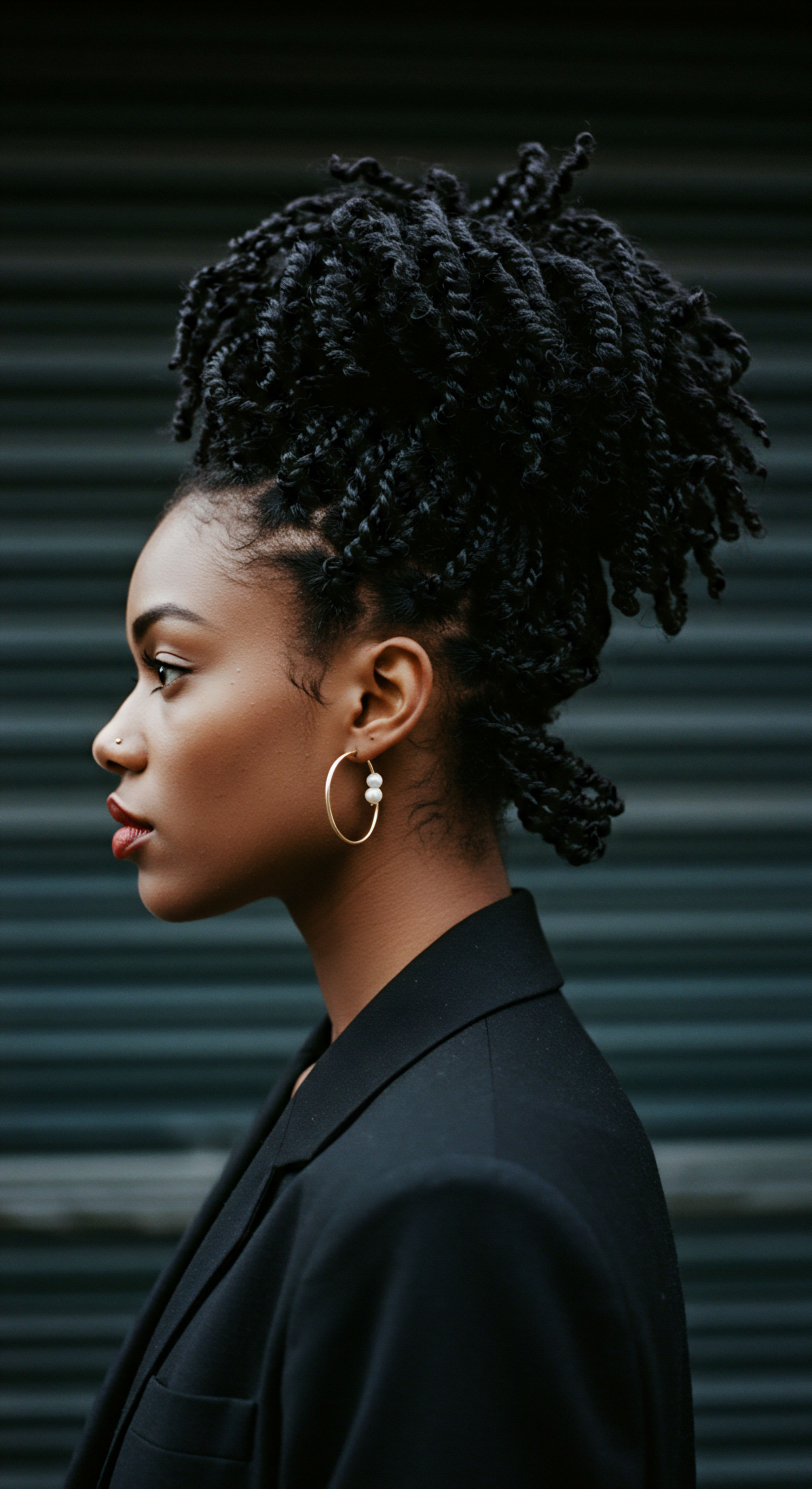
Did Specific Braiding Patterns Offer Protection?
Indeed, certain braiding and styling patterns were integral to nighttime preservation, acting as protective styles that minimized manipulation and exposure. These styles, often intricate and time-consuming to create, could last for extended periods, reducing the need for daily styling that might otherwise lead to breakage.
Styles such as Cornrows, Single Braids, and Twists were not merely aesthetic choices; they served a practical purpose. By securing sections of hair, they prevented tangling and friction against sleeping surfaces. When hair was braided or twisted, its delicate structure was less exposed to environmental stressors and the mechanical stress of movement during sleep.
This also allowed for deeper penetration of applied oils and butters, as the product was contained within the styled sections. The foresight in creating styles that offered sustained protection, even during rest, underscores the deep understanding of hair care that existed within these communities.
| Technique Headwrapping |
| Description Securing hair with cloth, often in a high bun or flattened style. |
| Primary Benefit Reduces friction, retains moisture, maintains style. |
| Technique Pre-Sleep Oiling/Buttering |
| Description Application of natural oils (e.g. shea, marula) or butters. |
| Primary Benefit Seals in moisture, nourishes strands, adds protective layer. |
| Technique Protective Styling (Braids/Twists) |
| Description Creating braids, cornrows, or twists before sleep. |
| Primary Benefit Prevents tangling, minimizes manipulation, shields from damage. |
| Technique These methods worked in concert to safeguard hair during nocturnal hours. |

Relay
To truly grasp the enduring wisdom of ancestral African hair preservation at night, we must move beyond simple descriptions of practices and delve into the intricate interplay of ethnobotany, cultural significance, and the surprising validations offered by contemporary science. This exploration reveals a profound, interconnected understanding of wellness that extends far beyond the cosmetic, reaching into the very heart of community and environmental harmony. The quiet acts of nighttime hair care were, in fact, a sophisticated system of biological and social stewardship, passed down through generations.

What Botanical Allies Aided Nighttime Preservation?
The African continent, a cradle of biodiversity, provided a veritable pharmacopoeia of plant-based resources that were central to hair health and nighttime preservation. Communities cultivated and harvested specific botanicals, understanding their unique properties through centuries of observation and empirical knowledge. These botanical allies offered cleansing, conditioning, and protective qualities, forming the bedrock of ancestral hair care.
Among the most celebrated ingredients was Shea Butter (Vitellaria paradoxa), sourced from the nuts of the shea tree, indigenous to West Africa. Renowned for its rich emollient properties, shea butter was (and remains) a staple for moisturizing hair and scalp, providing a substantial barrier against dryness and environmental aggressors. Its fatty acid profile made it exceptional for sealing moisture into strands, a critical function for overnight protection.
Similarly, Marula Oil (Sclerocarya birrea), extracted from the kernels of the marula tree prevalent in Southern Africa, was valued for its high antioxidant content and moisturizing capabilities. It helped to condition hair and protect it from oxidative stress.
Another powerful botanical often employed was African Black Soap, a traditional cleanser originating from West Africa. Made from the ash of plantain skins, cocoa pods, and shea tree bark, blended with various oils, it provided a gentle yet effective cleanse for the scalp and hair. While primarily a cleansing agent, its traditional formulation often included ingredients that left hair soft and receptive to subsequent moisturizing treatments, making it an important part of the overall care regimen that preceded nighttime protection.
Consider the intriguing case of Saponaria Vaccaria, also known as Cow Herb or Soapwort. While not exclusively African, plants rich in saponins, like those found in Saponaria vaccaria, were historically used as natural cleansing agents due to their soap-like foaming properties. The presence of saponins in various African plants utilized for hair care suggests an ancient understanding of gentle, effective cleansing without stripping hair of its natural oils. A study published in the Journal of Ethnopharmacology highlighted the use of various African plants for hair care, including those with properties that contribute to hair growth and scalp health.
For instance, research on Albizia saponaria bark extract, rich in saponins, flavonoids, and tannins, demonstrated its efficacy in promoting hair growth in rabbits. This scientific validation of traditional botanical use underscores the depth of ancestral knowledge, revealing how plant chemistry was intuitively understood and applied for hair preservation. This data point, often absent from broader discussions of hair science, speaks to the profound empirical wisdom of these communities.
| Botanical Name (Common Name) Vitellaria paradoxa (Shea Butter) |
| Primary Regions of Use West, East Africa |
| Key Properties for Hair Deeply moisturizing, occlusive, protects against dryness. |
| Botanical Name (Common Name) Sclerocarya birrea (Marula Oil) |
| Primary Regions of Use Southern Africa |
| Key Properties for Hair Antioxidant-rich, conditioning, aids moisture retention. |
| Botanical Name (Common Name) Adansonia digitata (Baobab Oil) |
| Primary Regions of Use African Savannah |
| Key Properties for Hair Hydrating, provides essential fatty acids, environmental protection. |
| Botanical Name (Common Name) Ricinus communis (Castor Oil) |
| Primary Regions of Use Widespread across Africa |
| Key Properties for Hair Moisture retention, scalp nourishment. |
| Botanical Name (Common Name) Traditional African Black Soap |
| Primary Regions of Use West Africa |
| Key Properties for Hair Gentle cleansing, prepares hair for conditioning. |
| Botanical Name (Common Name) These natural ingredients formed the basis of robust hair preservation practices. |

Beyond Protection ❉ The Cultural Tapestry of Nighttime Care
The act of preserving hair at night was seldom a solitary endeavor. It was often intertwined with community, intergenerational teaching, and the transmission of cultural values. These quiet moments before sleep became intimate spaces where knowledge was passed down, bonds were strengthened, and identity was affirmed.
Hair care rituals, including those for nighttime, were frequently communal events. Daughters learned from mothers, and younger women from elders, the precise methods of braiding, oiling, and wrapping. These sessions were opportunities for storytelling, sharing wisdom, and reinforcing social connections.
The time spent in communal grooming, often extending over hours, was a social activity that strengthened familial ties and community cohesion. This communal aspect ensured that traditional practices were not lost but rather reinforced and adapted across generations.
The cultural significance of hair extended to rites of passage, where specific styles and care routines marked transitions in life, such as marriage or adulthood. Preserving these styles overnight meant preserving the very symbols of these life stages. The act of carefully covering hair before sleep was therefore an act of self-respect, cultural pride, and a continuation of a lineage of beauty and identity. It was a silent affirmation of belonging and a commitment to maintaining the visual language of one’s heritage.
Nighttime hair preservation, a blend of ethnobotany and cultural ritual, was a sophisticated system of biological and social stewardship.
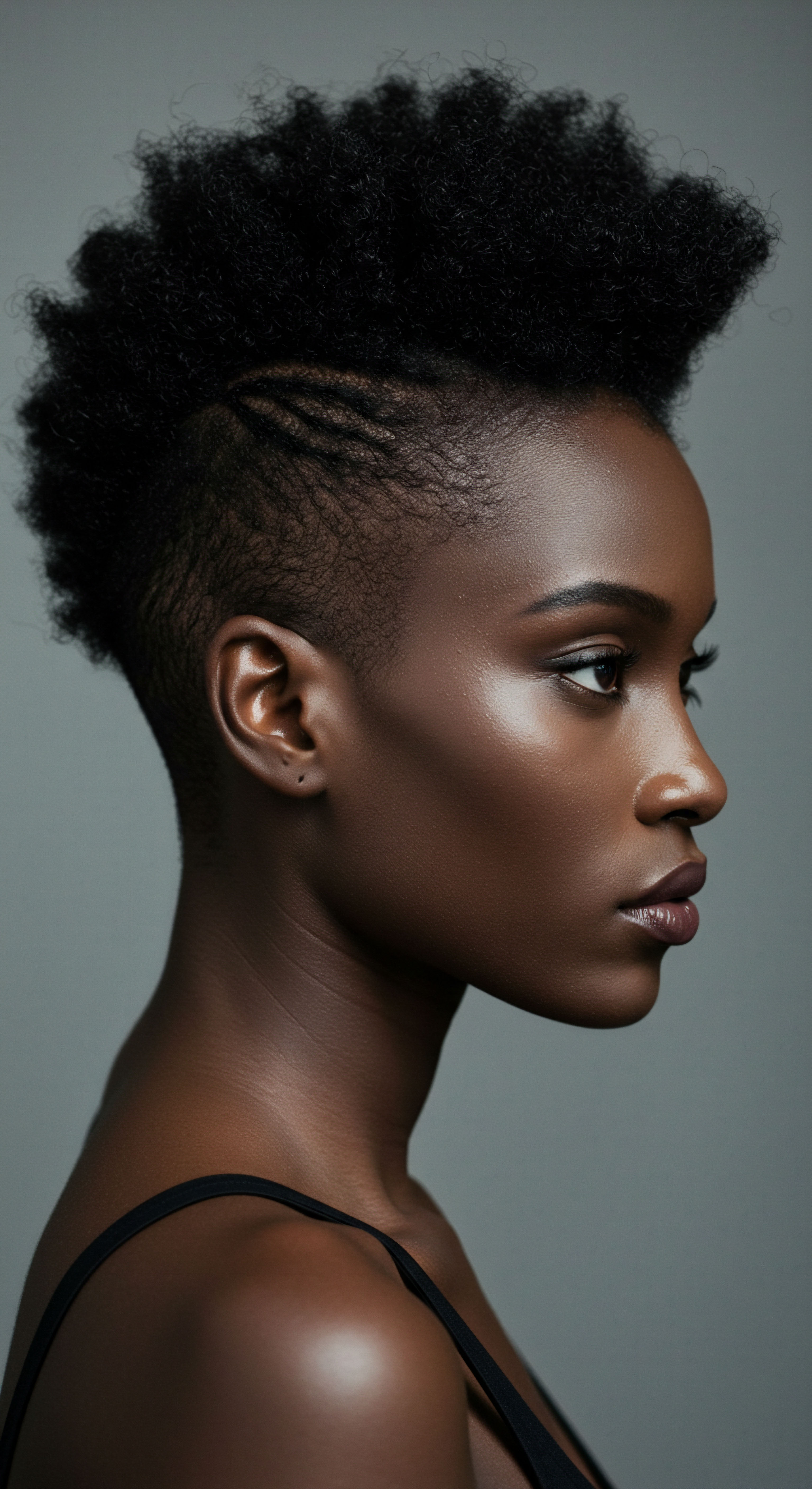
How Do Ancient Practices Speak to Modern Hair Science?
The ancestral methods of nighttime hair preservation, though developed without the aid of microscopes or chemical analysis, align remarkably with contemporary hair science. The wisdom embedded in these practices often predates modern scientific validation, yet their efficacy is now increasingly understood through a scientific lens.
The practice of covering hair with smooth materials, even if not silk or satin, directly addresses the modern understanding of Mechanical Friction. Scientists now recognize that friction from rough surfaces like cotton pillowcases can lift the hair’s cuticle, leading to moisture loss, frizz, and breakage. Ancestral coverings, by providing a smoother surface, minimized this cuticle damage, thereby preserving hair’s integrity and hydration. This demonstrates an intuitive grasp of hair mechanics.
Furthermore, the consistent application of natural oils and butters resonates with modern principles of Moisture Retention and Lipid Barrier Function. Textured hair, due to its coiled structure, is prone to dryness because natural sebum struggles to travel down the hair shaft. Oils like shea and marula are rich in fatty acids that can coat the hair, creating an occlusive layer that slows down water evaporation from the hair strand. This ‘sealing’ effect is a cornerstone of modern hair care for textured hair types, directly mirroring the benefits observed in ancestral practices.
Even the protective styling of braids and twists finds validation in contemporary trichology. By securing hair in these styles, ancestral communities were effectively minimizing Daily Manipulation and Environmental Exposure, two major culprits of hair damage. Less manipulation means less breakage, and tucked-away ends are less susceptible to split ends from friction with clothing or environmental elements. This proactive approach to minimizing stress on the hair aligns perfectly with current recommendations for promoting length retention and overall hair health in textured hair.
The ancient practices, far from being mere folklore, represent a sophisticated, empirically derived science of hair care, passed down through generations. They offer compelling evidence that traditional knowledge systems often hold profound truths that modern science is only now beginning to quantify and explain.

The Quiet Resilience of Ancestral Methods Today
The legacy of ancestral African nighttime hair preservation methods continues to echo powerfully in contemporary hair care routines. Many modern practices for textured hair draw direct inspiration from these historical traditions, a testament to their enduring effectiveness and cultural resonance. The quiet resilience of these methods is seen in their continued relevance and adaptation in the modern world.
For countless individuals with textured hair, the nighttime ritual of protecting strands remains a cornerstone of their regimen. The widespread adoption of Satin Bonnets and Silk Pillowcases is a direct continuation of the ancestral imperative to reduce friction and retain moisture. These modern materials offer a smoother glide than cotton, preventing tangles and preserving curl patterns. The ‘pineapple method,’ where hair is gathered loosely at the top of the head and secured, often with a soft tie or scarf, is a contemporary adaptation of ancient gathering techniques to preserve curl definition and volume overnight.
Furthermore, the use of natural oils and butters remains central to many regimens. Products featuring shea butter, coconut oil, argan oil, and marula oil are ubiquitous in the textured hair market, reflecting a conscious return to ingredients revered for centuries. This continuity speaks to a recognition that the earth’s offerings, intuitively applied by ancestors, possess inherent properties that science now validates.
The preference for protective styles like braids and twists for overnight wear, or for extended periods, also reflects a deep understanding of hair’s needs for rest from manipulation. These styles continue to serve as a bridge between historical wisdom and present-day needs, allowing for both preservation and self-expression.
This persistence of ancestral methods is not merely a nostalgic adherence to the past; it is a practical and effective approach to hair care that has stood the test of time. It underscores a powerful truth ❉ that profound knowledge, often transmitted through oral tradition and lived experience, can be as potent and enduring as any formalized scientific discovery. The quiet nightly rituals, once confined to homesteads across Africa, now reverberate globally, a living testament to the ingenuity and wisdom of those who came before.

Reflection
As the sun dips below the horizon, and the world quiets, a profound echo of ancestral wisdom softly settles over the modern practice of hair care. The methods passed down through generations, those quiet acts of protection and nourishment, speak to a deep, abiding respect for the delicate life of textured hair. They remind us that true care extends beyond fleeting trends, rooting itself in a timeless understanding of natural resilience and beauty. This journey through history reveals not just techniques, but a philosophy ❉ that the preservation of our strands, especially through the vulnerable hours of night, is an act of self-regard, a silent conversation with the earth’s generosity, and a continuing legacy of ingenious care.

References
- Ademefun, S. (2020). Rona Wigs ❉ The Purpose of Protective Styling .
- Agoro, T. (2020). Hair Artist Insights on Black Hair Fragility .
- Ani, M. (2006). Let the circle be unbroken ❉ The implications of African spirituality in the Diaspora. Nkonimo, New York.
- Caldwell, P. (1991). A Hair Story ❉ Untangling the Roots of Black Hair in America .
- Donkor, A. et al. (2014). Application of oil from baobab seeds on the antioxidant capacity and stability of ascorbic acid in fruit pulp at varying temperatures .
- Gordon, M. (2008). The Dreaded Colonial Legacy .
- Joshi, N. et al. (2023). Role and Mechanisms of Phytochemicals in Hair Growth and Health. PubMed Central.
- Komane, B. R. et al. (2017). Baobab oil for skin ❉ Nature’s Moisturiser .
- Lukate, R. (2022). Space, race and identity ❉ An ethnographic study of the Black hair care and beauty landscape and Black women’s racial identity constructions in England. ResearchGate.
- Morrow, W. (1973). 400 years without a comb ❉ The untold story. Black Publishers, San Diego.
- Mustarichie, R. (2022). Hair Growth Promoting Activity of Langir Bark (Albizia saponaria Lour.) Ethanol Extract ❉ In-vivo Assay. Rasayan Journal of Chemistry.
- Oforiwa, A. (2023). The History and Culture of African Natural Hair ❉ From Ancient Times to Modern Trends. AMAKA Studio.
- Omotos, A. (2018). Journal of Pan African Studies ❉ The importance of hair in ancient African civilizations .
- Oyedemi, T. (2016). Black Aestheticism and Hair .
- Randle, S. (2015). Hair, Culture, and the African American Woman ❉ A Historical Perspective .
- Sieber, R. & Herreman, L. (2000). Hair in African Art and Culture. ResearchGate.
- Tharps, L. (2023). Hair Story ❉ Untangling the Roots of Black Hair in America .
- Thompson, S. (2009). Black Women and Hair ❉ A Qualitative Investigation .
- Weitz, R. (2004). Hair ❉ The Social and Cultural Significance of Hair .